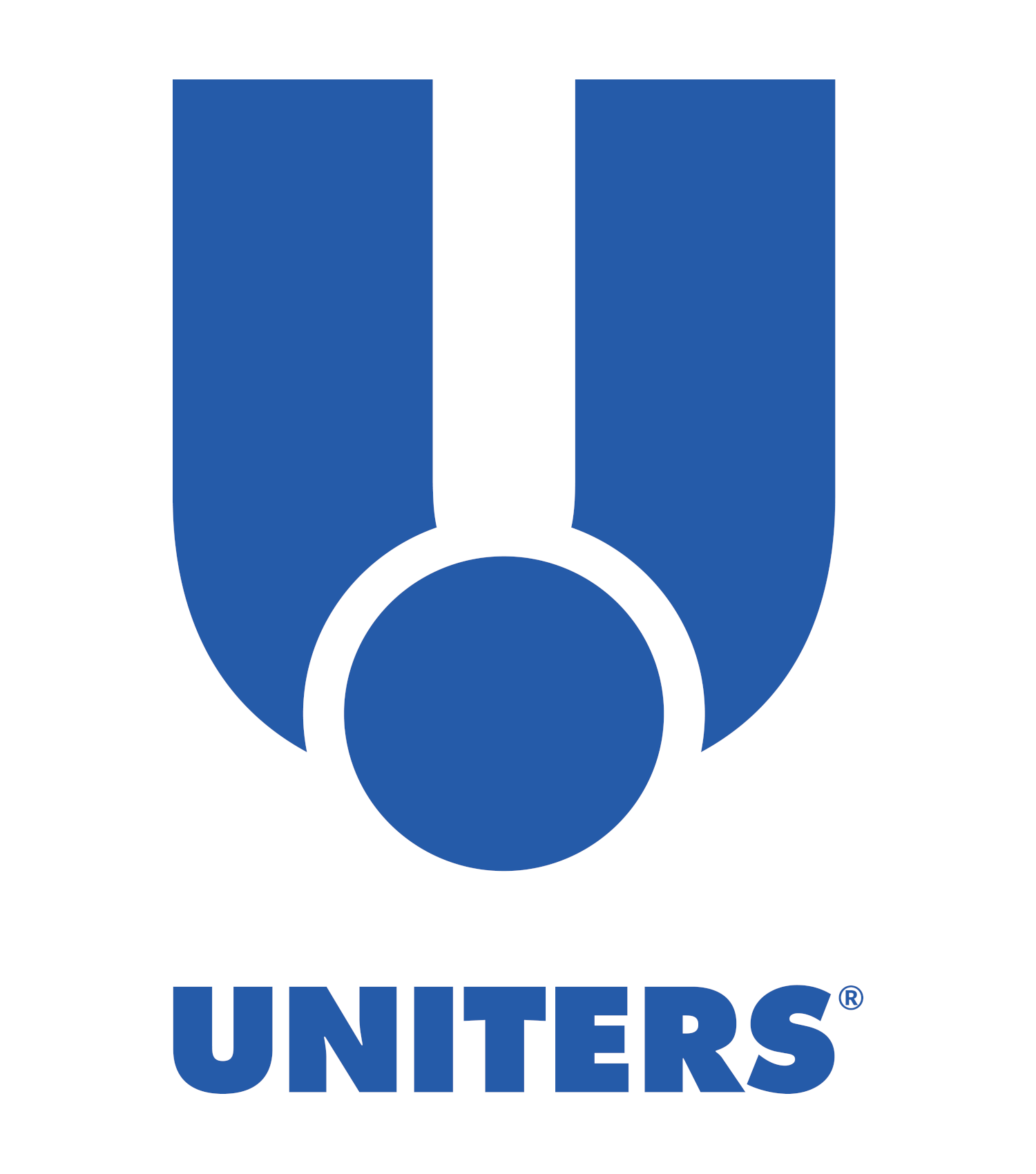LEATHER BASICS
You can expect many years of enjoyment from your leather furniture due to its comfort and durability. Leather molds to a form, but will not stretch out of shape. It conforms to the body shape and becomes more comfortable with each use. Only leather ages so gracefully, becoming more supple and beautiful through its years of use when properly cared for.
Leather is an enduring material. Since it is a natural material, leather breathes which means that it can absorb 15 percent of its own weight in humidity and releases it again. This process is called transpiration. Leather also has excellent temperature adaptation. It regulates temperature to what is nearest. Air moves through leather freely, while vinyl and synthetic backed fabrics can trap air.
Leather has very tight and strong fibers this is derived from the three-dimensional weave structure of leather. This feature prevents the penetration or bonding of dust mites, animal hair, and smoke. Leather is not only hypoallergenic but also flame resistant. Because of its strength and elasticity leather has a high ripping resistance with over 200 pounds of pull needed to rip the leather. This gives leather a great advantage over fabrics and is why people around the world choose leather as their material of choice for shoes, handbags, clothing, and furniture.
The Natural Characteristics of Leather
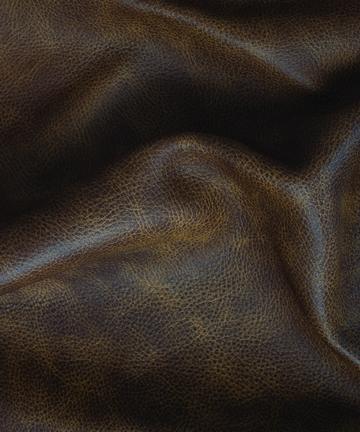
Premium aniline-dyed leather displays subtle variations of color across the surface of the hide. When the hide is cut and sewn together, care is taken to attempt to match adjacent pieces, but subtle color differences may occur. These are not signs of poor quality; in fact, they highlight the unique and natural quality of premium leather, left unmasked by opaque dyes and varnishes.
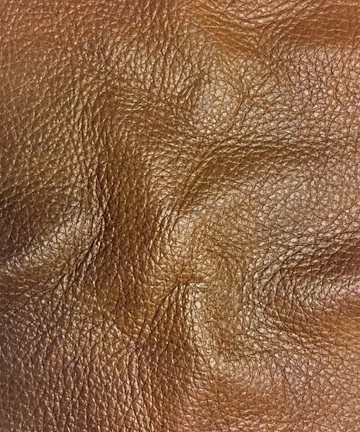
Premium leather hides used for upholstering furniture exhibit slightly non-uniform surface qualities, depending on the area of the hide from which they were cut. Pigmented-dyed leathers are buffed and embossed to obscure these natural texture characteristics. Variations in texture are not flaws and will not affect leather durability. These variations are unique and should be embraced for they tell the story from where hide originated.
Common Surface Variations
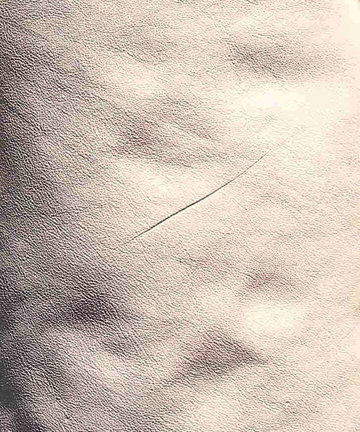
Smooth to the touch, these rub marks may accept dye with a slight variation to the surrounding area.
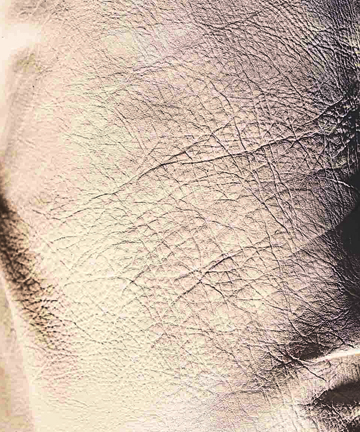
Natural folds highlight unique grain patterns.
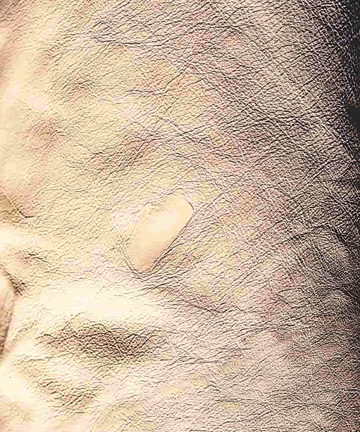
Barbed-wire scratches and deeper rubs create organic surface texture and one-of-a-kind authentic leather character. These marks do not affect the durability of the hide.
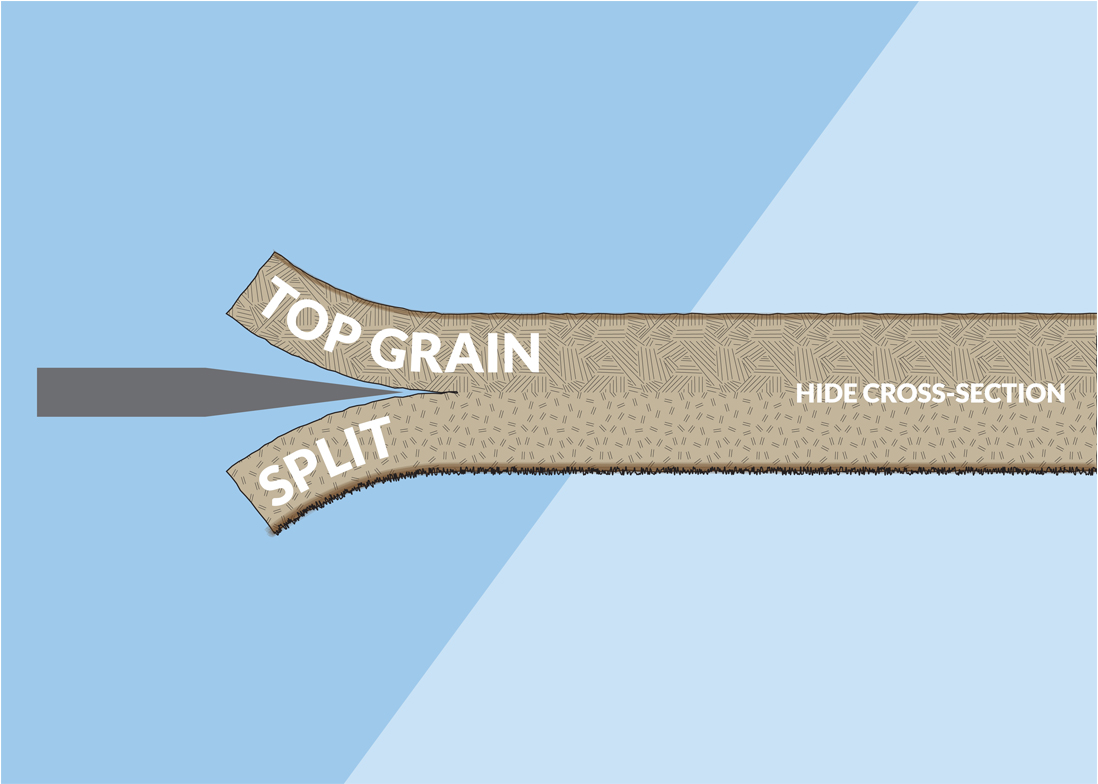
Top Grain and Split Grain Leather
Top Grain - The outermost layer of the hide that is left after splitting of the hide into layers. It is the strongest, softest and most breathable part of the hide. It is also the part of the hide that will show the life of the hide through natural markings.
Split Grain - The innermost layers of the hide left after splitting. They are weaker, stiffer and less breathable than top grain leather. These are usually put on the sides and the back part of leather furniture.
How to Recognize Various Types of Leather
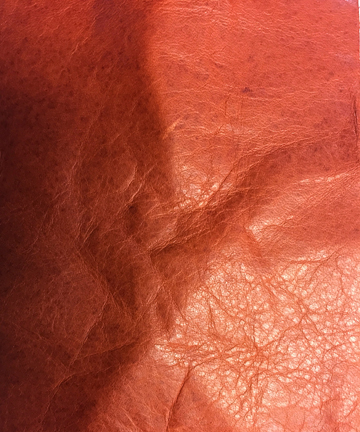
Cleaning Code “A”
Aniline is the finest leather available, always made from premium quality, full top grain hides (the surface of a full-grain hide has not been mechanically altered). Aniline is any leather that receives its entire color solely from transparent aniline dyes and whose grain retains its original state. Natural markings and characteristics are exhibited. No topical treatments or pigments are used in determining the color of the leathers.
Identifying Aniline Leather:
- Some furniture comes with a label attached to an inconspicuous location, this label may identify what type of leather you have.
- Aniline is absorbent, to test, place a drop of water on the leather in an inconspicuous area, it will absorb into the leather and darken, but dry invisible.
- Lightly scratch the surface to see if it leaves a lighter color mark. If it scratches to a light color, it is Aniline. This is not the only test because some Nubuck Leathers will also do this.
Characteristics and Expectations
- Soft and supple to the touch.
- A rich patina develops with time enhancing the appearance of the leather.Healed scars, wrinkles, stretch marks, brands, and scratches are unique characteristics and will be visible. More likely to fade or stain.
- Healed scars, wrinkles, stretch marks, brands, and scratches are unique characteristics and will be visible. More likely to fade or stain..
- Color variation and shading difference from hide to hide and even within the hide. This is not a sign of poor quality; in fact, they highlight the unique and natural quality of premium leather.
- Cleans best when used with a UNITERS Natural Leather Care Kit, Never use detergents, soaps or chemicals to clean the surface.
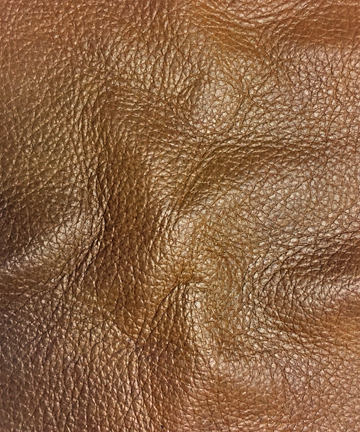
Cleaning Code “P”
Semi-aniline Leathers offers the best of both worlds. They have the soft “buttery” feel of Pure Anilines and all of the protection and cleanability of Protected Leathers. Semi-Aniline dyed leathers have been both dyed through and have a thin finishing layer and/or pigment finish on the surface. Semi-Aniline leather is Full Grain displaying the leathers full range of natural markings. They offer a combination of the softness and feel of full aniline leather with the protective benefits of a surface finish. By dyeing the leather through before the final thin top coating is applied, a very even coloration is achieved with only a thin layer of finish. Thus the leather remains softer because it is not necessary to apply a thick top coating. Semi-Anilines have a higher resistance to UV, Water, and Soil over Pure Aniline.
Identifying Semi-Aniline Leather:
- Some furniture comes with a label attached in an inconspicuous location, this label may identify what type of leather you have.
- Aniline is absorbent Semi-Aniline is more resistant to absorption. To test, place a drop of water on the leather in an inconspicuous area, it should remain on the surface but after an extended period of time will absorb into the leather.
Characteristics and Expectations
- Healed scars and scratches are slightly visible within hides.
- Soft and supple to the touch.
- The hides wear well in time and use.
- Never use detergents, soaps or chemicals to clean the surface, as they may damage the leather.
- Semi-Aniline is cleaned best using our UNITERS Natural Leather Care Kit.
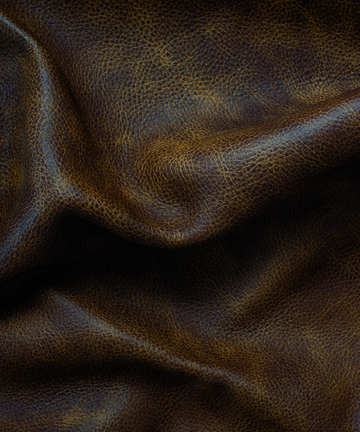
Cleaning Code “A”
Unlike most leathers today, Pull-Up Leathers are impregnated with natural oils and waxes, not heavily coated with paints and pigments. The oils and waxes used in the finish also give the leather a characteristic called “Pull-Up”. The Pull-Up is enhanced as the leather is stretched and pulled during the upholstery process and provides even more beautiful shading and unique, subtle coloration. This process allows the scars, scratches, and wrinkles that occur naturally on the leather hides to show through the finish.
Characteristics and Expectations
- Some furniture comes with a label attached in an inconspicuous location, this label may identify what type of leather you have.
- The best way of identifying Pull-Up leather is to lightly scrape a fingernail in a hidden area, a scratch much lighter in color will appear. Scratches can be easily removed by using UNITERS Waxon Leather Care.
Identifying Pull-Up Leather
- Greatly desired patina comes from natural body oils.
- Coloration will vary throughout the hide.
- Fading can occur if exposed to direct sunlight.
- Never use detergents, soaps or chemicals to clean the surface, as they will tend to remove natural oils in the leather.
- Pull-Up Leathers require very little maintenance. In fact, most surface scratches can be removed simply by rubbing them with your fingertips. The warmth of your hand releases the natural oils, causing the marks to disappear.
- Cleans best with UNITERS specialty kits such as; UNITERS Waxon Leather Care kit for Wax Pull-Up and UNITERS Oleosa Leather Care kit for Oil Pull-Up.
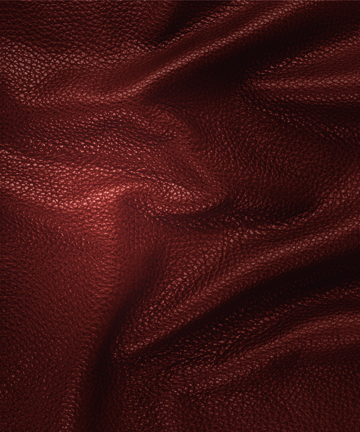
Cleaning Code “P”
Also called finished, full finished, semi-aniline, protected, corrected, painted or pigmented. These leathers have combined the best aspects of a natural leather and tannery technology to create a product that is more uniform in appearance and color due to pigments that are applied to the surface. Protected leathers are the most common leathers and for most consumers, the most practical. Unlike aniline leathers, you can cover and color the damaged area with pigments. The pigments actually create a film on top of the leather covering up the actual surface.
Identifying Protected Leather
- Some furniture comes with a label attached to an inconspicuous location, this label may identify what type of leather you have.
- Lightly scratch the surface to see if it leaves a lighter color scratch mark. If it does not scratch to a lighter color (this means the color remains the same), then this is Protected Leather.
- The surface should have some sort of sheen to it. It is like looking at wood that has a lacquer finished compared to a wipe-on oil treatment.
- If you wet the area of a Protected Leather, the water should stay on top of the finish and should not darken the leather.
Characteristics and Expectations
- Coloration will be consistent throughout the hide.
- Healed scars and scratches should be used in less visible areas (the outer back and arms).
- Due to a pigmented topcoat, serviceability, durability and cleanability are very good.
- Protected leathers wear consistently with time.
- Never use detergents, soaps or chemicals to clean the surface, as they may damage the leather.
- Protected leather is cleaned best using UNITERS Leather Care Kit.
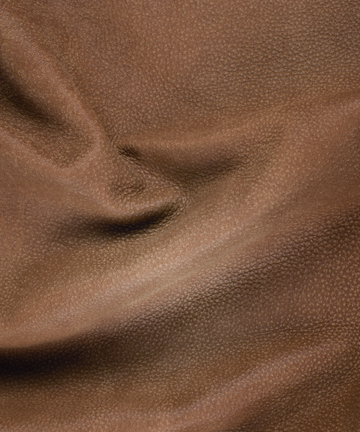
Cleaning Code “N”
These are Aniline leathers that the surface has been brushed or sanded and have created a texture similar to velvet on leather. Brushing or Sanding breaks the surface and opens up the leather making it incredibly soft. The brushing also makes the leather even more absorbent than aniline leathers, this leather has the softest feel. Suede is the bottom or flesh side of a piece of leather and Nubuck is an effect that is done to the top or grain side. These leathers are also known as Chaps, Distressed, Reverse Suede and Bomber.
Identifying Nubuck Leather
- Some furniture comes with a label attached to an inconspicuous location, this label may identify what type of leather you have.
- The surface should have a texture similar to velvet. When moving your hand across the surface and if it leaves shading traces similar to the effect when you vacuum a carpet in one direction and then in another, it is Nubuck.
- Wet your finger and rub lightly on the surface. The surface will darken and also will dry to a slightly darker shade.
- For waxed surfaces, run an area of the leather with a sponge several times. This will remove the wax and let you see if the leather meets test 1 or 2 above.
Characteristics and Expectations
- Coloration will vary throughout the hide.
- Healed scars and scratches are unique characteristics and should be cut into the pattern.
- A luxurious feel along with a slight nap is to be expected.
- Nubuck is cleaned best using UNITERS Nubuck Care Kit.
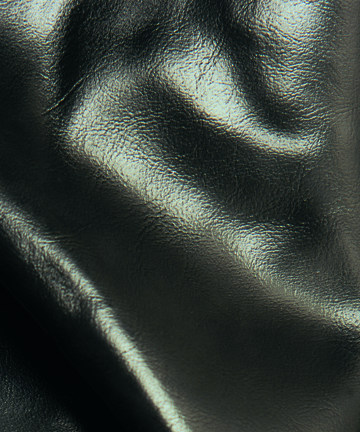
Cleaning Code “PU“ or “B”
Bicast leather (also known as Bycast leather, split leather or PU leather) is a split leather with a layer of polyurethane applied to the surface and then embossed. Bicast was originally made for the shoe industry and adopted by the furniture industry. The resulting product is cheaper than top grain leather and has an artificially consistent texture that is easier to clean and maintain but may not last as long as top grain leathers.
Identifying Bicast
- Some furniture comes with a label attached to an inconspicuous location, this label may identify what type of leather you have.
- Limited array of colors, primarily dark brown and black.
- Plastic-like, often an application of wax is applied to make Bicast feel softer.
- Glossy in nature.
- Due to the polyurethane bond, Bicast leather may have a chemical smell that may decrease over time.
Characteristics and Expectations
- This is the stiffest, least soft of all leathers
- Highly resistant.
- Stain resistant.
- No natural markings are visible.
- Water cannot easily penetrate the polyurethane film.
- Bicast will not develop a patina or become more supple over time.
- With constant use, the polyurethane layer will crack and split free of its backing.
- Bicast leather is cleaned best using UNITERS PU Care Kit.
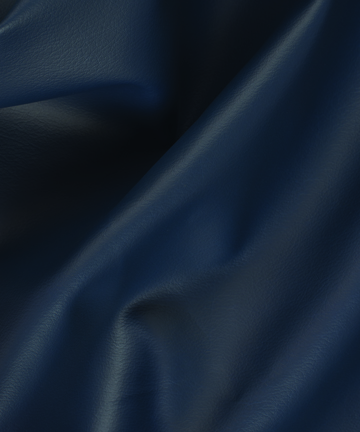
Cleaning code P/F or W
Bonded leather or Reconstituted leather is a material made of varying degrees of genuine leather combined with other substances to give the appearance of leather at a reduced cost. Bonded leather can found in furniture, bookbinding, and various fashion accessories. Examples of products that are most commonly constructed with different varieties of “bonded leather” are diaries, art books, desk accessories, bags, chairs, and sofas.
There are different types of bonded leather, but the type being used on upholstered furniture today is a polyurethane or vinyl product backed with fabric and then a layer of latex or other material mixed with a small percentage of leather fibers in the product’s backing material. The actual leather content of bonded leather upholstery is typically about 17%. None of it is contained in the surface of the bonded leather. The polyurethane surface is laminated to give it a leather-like texture.
Identifying Bonded Leathers or Reconstituted Leather
- Some furniture comes with a label attached to an inconspicuous location, this label may identify what type of leather you have.
- Limited array of colors, primarily dark brown and black.
- Plastic-like, often an application of wax is applied to make Bicast feel softer.
- Glossy in nature.
- Due to the polyurethane bond, Bonded leather or Reconstituted leather may have a chemical smell that may decrease over time.
Characteristics and Expectations
- This is the stiffest, least soft of all leathers
- Highly resistant.
- Stain resistant.
- No natural markings are visible.
- Water cannot easily penetrate the polyurethane film.
- Bonded leather or Reconstituted leather will not develop a patina or become more supple over time.
- With constant use, the polyurethane layer will crack and split free of its backing.
- Bonded leather or Reconstituted leather is cleaned best using UNITERS PU Care Kit.
General Leather Care
Proper care and preventative maintenance with UNITERS products are vital to the life of your leather furniture.
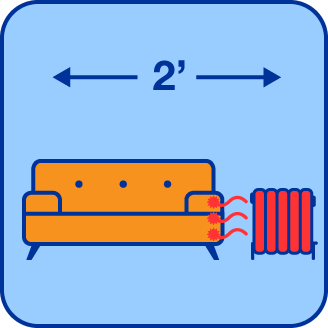
Position all leather seating at least two feet from heating sources. Prolonged exposure to heat dries out leather.

Leather fades when exposed to sunlight, so keep leather seating away from direct light sources such as windows, skylights, and open doors.
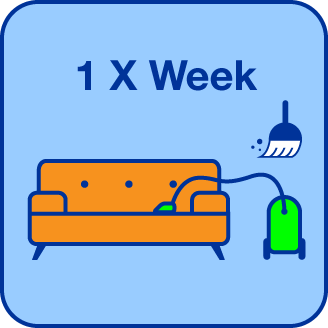
Vacuum or dust weekly. Use a clean, soft white cloth to clean your leather furniture. If using a vacuum cleaner, a soft brush attachment is best to prevent scuffing or scratching.
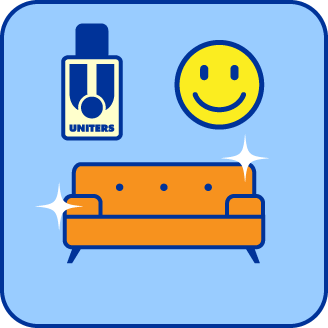
Practice preventative maintenance. Treat surfaces with the recommended UNITERS Cleaner, Conditioner or Protector to improve the leather’s resistance to soiling. Give special attention to high-use areas such as seats, arms, and backs. Fully clean and re-protect your leather furniture every six months. Always pre-test in a hidden area first to test the results whenever possible.
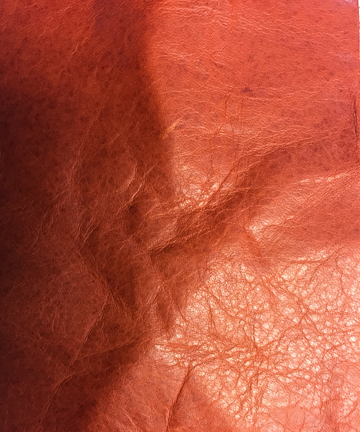
Care Tips For Aniline And Protected Leathers
Extra precaution should be taken to keep Aniline Leathers away from direct sunlight as they are particularly sensitive to fading.
To dust, lightly dampen a soft cloth with Leather Master® Soft Cleaner and dust weekly. You will be able to fully remove dust particles from Aniline and Protected Leathers, making them easier to live with for dust-sensitive people.
Preventative Care:
- Apply Leather Master® Protection Cream to the surface to help resist staining and soiling. Regular use of this cream will significantly improve the cleanability of Aniline Leather and help prevent possible cracking of Protected Leather.
- Clean with Leather Master® Soft Cleaner every six months to remove dirt and body oils. After cleaning, apply Leather Master® Protection Cream to restore the protection level.
- UNITERS Natural Leather Care Kit is available for cleaning and Protection of aniline and protected leather in one convenient, easy to use kit.
- UNITERS Natural Leather Care Kit is available for the cleaning and protection of aniline and protected leather in one convenient, easy to use kit.
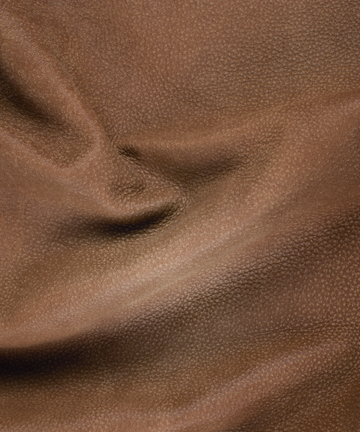
Care Tips For Nubuck Leathers
- All Nubuck Leathers will fade from exposure to direct sunlight.
- Treat the surface with UNITERS Nubuck Eco-Protector to significantly improve its resistance to staining and soiling. Be sure to treat high-use areas like seats, arms, and backs.
- To pick up surface soils and restore the leather to its original look and feel use Leather Master® Nubuck Cleaning Cloth . Wrap the cloth around a soft dry sponge and rub in several directions.
- Use UNITERS Nubuck Cleaner on water-based stains. Apply the cleaner to a soft sponge and squeeze until you see a white foam. Using the sponge, work the foam gently into the area. Allow to dry, then use the Leather Master® Nubuck Cloth as the final step. For oil-based stains, use Leather Master® Degreaser.
- UNITERS Nubuck Leather Care Kit is available for cleaning and protection in one convenient, easy to use kit.
Stains And Spills
While leather initially repels most spills, they will be naturally absorbed if not treated properly. Blot any liquids immediately with a clean, white absorbent cloth or sponge, and then let air-dry. If a spill is absorbed, it will dissipate over time as the leather naturally diffuses the stain.
Problem Stains and Their Solutions
- Oil and Grease: Naturally occurring oils from our hair and skin, and grease from oily foods can not only stain your leather, but over long periods of time can actually break down the color of leather. To remove most oil and grease stains use Leather Master® Degreaser.
- Ballpoint pen ink: If discovered within 5-7 days, ballpoint pen can be easily removed with Leather Master® Ink Lifter.
- Bodily fluids: Most bodily fluids can be removed using Leather Master® Strong Cleaner
- Paint and nail polish: If discovered early enough, small paint spills and nail polish can be removed using Leather Master® Strong Cleaner.
- Mould & Mildew: Leather Master® Mold Cleaner is a specially formulated detergent that penetrates and cleans mold and mildew from within the leather. This product also eliminates odors caused by mold and mildew.
- Dye Transfer: Specialized cleaning is needed to remove dye or color transfer such as blue jean dye transfer, newspaper print transfer, shoe polish, lipstick, chewing gum or markers especially on light colored leather. Leather Master® Dye Transfer Remover is specially designed to address these issues. Light colored leather can be cleaned and protected to prevent dye transfer with UNITERS Light Colored Leather Kit (not suitable for medium or dark colored leather, do not use on suede, nubuck .
- Spew, Spue, or Fat Spew: Spew refers to the natural fats that migrate or “spew” from the inside of leather to the surface. Spew on the surface of leather looks like a milky film, haze or small white dots. Though rare, it is most often seen in Aniline leathers. It may be wiped away with a cloth, but will reappear soon after. Applying Leather Master® Spew Remover to the surface wipes away the spew and absorbs into the leather to lock in the remaining fat liquors inside the leather to prevent the reappearance of spew.
- Odors: Unwanted odors not associated with the natural odor of leather can be eliminated with Leather Master Odor Remover, It is not a perfume but a true odour neutralizer.
- Color loss: Depending on the severity and the length of time a stain has affected the leather an application of color products may be necessary. Color loss from fading due to overexposure to sunlight may also be restored using UNITERS color products.
UNITERS provides color to match leather from hundreds of furniture manufacturers including; American Signature, Basset, Bradington Young, Craft Master, Flexsteel, Hancock & Moore, La-Z-Boy, Lexington Leather, Mitchell Gold, and USA Premium Leather to name a few. With literally thousands of different colors used on leather furniture today, UNITERS is here to help you find the color you need. please call 1-800-234-8986 option 2 for color products and assistance.
Home Remedies that can damage your leather
There are numerous home remedies found on the Internet that offer advice on how to care for leather, most of these, if not all will actually do more harm than good. General household cleaners can actually permanently damage the finish of your leather, without the right product specifically formulated to clean leather, a small problem can quickly grow into a major issue!
Never clean leather with:
- Alcohol
- Acetone
- Oil based cleaners
- Silicone-based cleaners (usually for automotive use)
- Vinegar
- Lemon juice
- Honey
- Saddle cleanser
- Detergents
- Nail Polish Remover
- Pencil or ink Erasers
- Hair Spray
- Window cleaner
- Kitchen and bathroom cleaners
- General purpose cleaners
- Disposable disinfectant or cleaning wipes not specifically made for leather
- “Eraser” sponges
Never condition leather with:
- Olive or other cooking oils
- Skin moisturizers
- Beeswax
Never touch up color on leather with:
- Furniture or art markers
- Shoe polish
- Paint not specifically formulated for leather.
Do your research before cleaning, we have! For decades the laboratory at the UNITERS Research Center has worked directly with tanneries and furniture manufacturers worldwide to formulate only the finest cleaning products specifically designed for the complexities of a variety leathers.
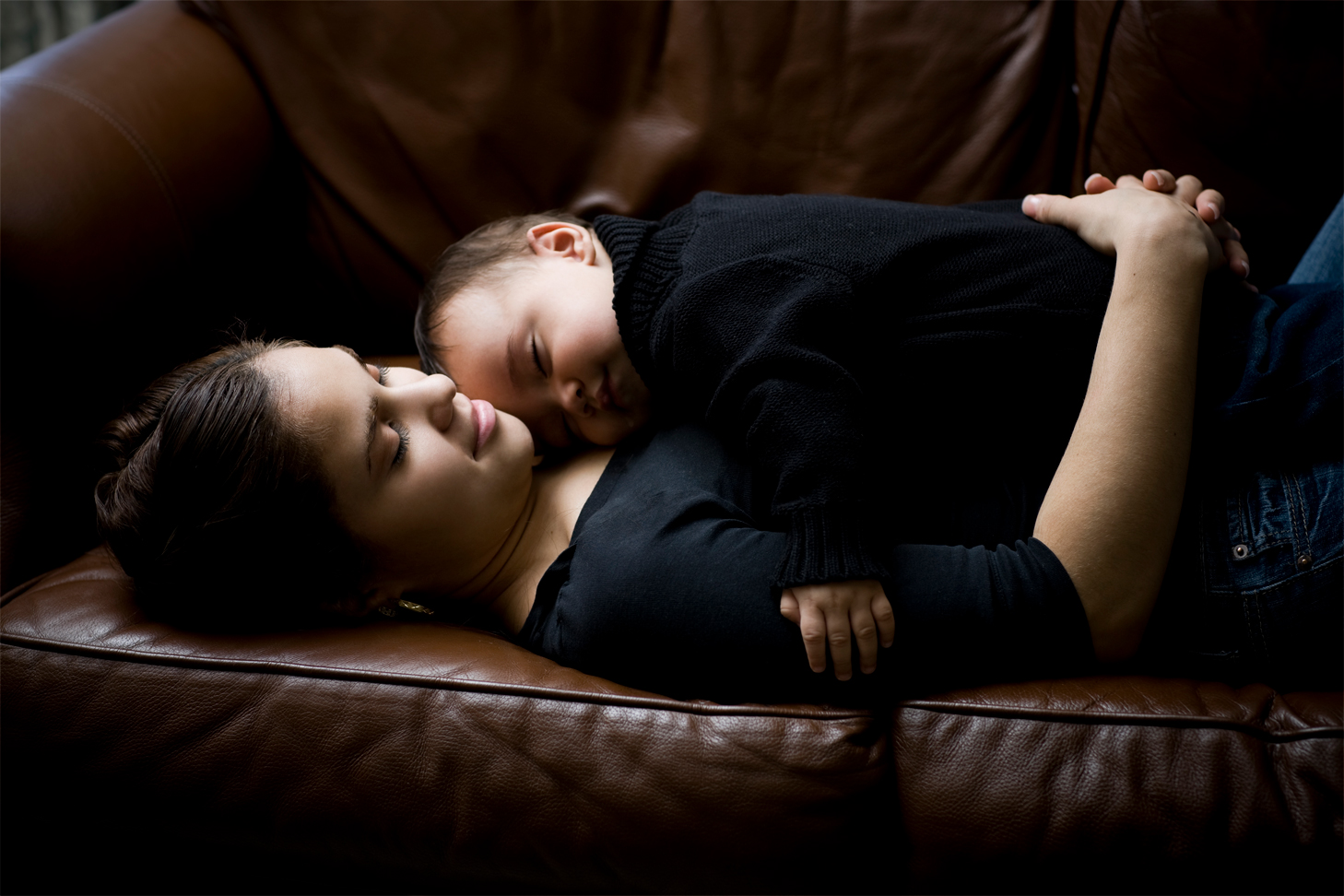
I don't want to use harsh chemicals on my leather!
UNITERS is committed to producing safe, natural and environmentally friendly products using only the highest quality ingredients that are manufactured incorporating socially responsible methods. Almost all products UNITERS offers are water-based, biodegradable, VOC-free, phosphate-free, ozone-friendly and are free of any Hazardous Air Pollutants (HAPs).





